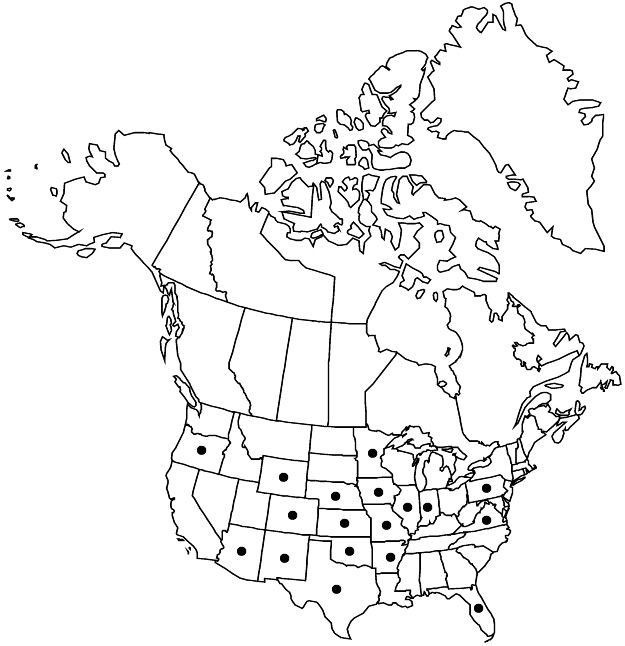Callirhoë involucrata
Mem. Amer. Acad. Arts, n. s. 4: 15. 1849.
Plants perennial. Stems 4–11(–21), decumbent to weakly erect, 0.5–8 dm, hairy, hairs stellate, 4-rayed, and simple. Leaves: stipules persistent, ovate to ovate-lanceolate, somewhat auriculate, 2.5–15(–23) mm; petiole 0.7–13(–23.5) cm; blade suborbiculate to ovate, 3–5-lobed, 1–8.5 × 1–12 cm, surfaces hairy, hairs stellate and simple abaxially, mostly simple adaxially, lobes oblong, obovate, or inversely trowel-shaped. Inflorescences racemose; involucellar bractlets 3, linear to ovate, 4.5–17.5 × 0.5–3.5 mm. Flowers bisexual or functionally pistillate; calyx lobes distinct and divergent in bud, not forming point; petals reddish purple with white basal spot, white, or mauve with white margins. Schizocarps 7–11 mm diam.; mericarps 10–28, 2–5.5 × 1.7–3.8 mm, glabrous or hairy, indehiscent; beaks not prominent, 0.7–2.1 mm; collars weakly to well developed, 2-lobed.
Distribution

Ariz., Ark., Colo., Fla., Ill., Ind., Iowa, Kans., Minn., Mo., N.Mex., Nebr., Okla., Oreg., Pa., Tex., Va., Wyo., n Mexico.
Discussion
Varieties 3 (2 in the flora).
The varieties of Callirhoë involucrata, including var. tenuissima Palmer ex Baker f., which is known only from Coahuila and Nuevo León, Mexico, are weakly differentiated. Both of the flora varieties are cultivated.
Selected References
None.
Key
| 1 | Sinuses between lobes of cauline leaves extending to within 5–15 mm of petiole; stipules 5–15(–23) × (3.5–)5.5–10(–15) mm; involucellar bractlets 6–17.5 × 1.5–3.5 mm; petals reddish purple with white basal spot, rarely entirely white; mericarps hairy. | Callirhoë involucrata var. involucrata |
| 1 | Sinuses between lobes of cauline leaves extending to within 2–5 mm of petiole; stipules 2.5–11.5 × 1.5–7(–9) mm; involucellar bractlets 4.5–10(–13.5) × 0.5–2 mm; petals reddish purple with white basal spot, entirely white, or mauve with white margins; mericarps glabrous or hairy. | Callirhoë involucrata var. lineariloba |